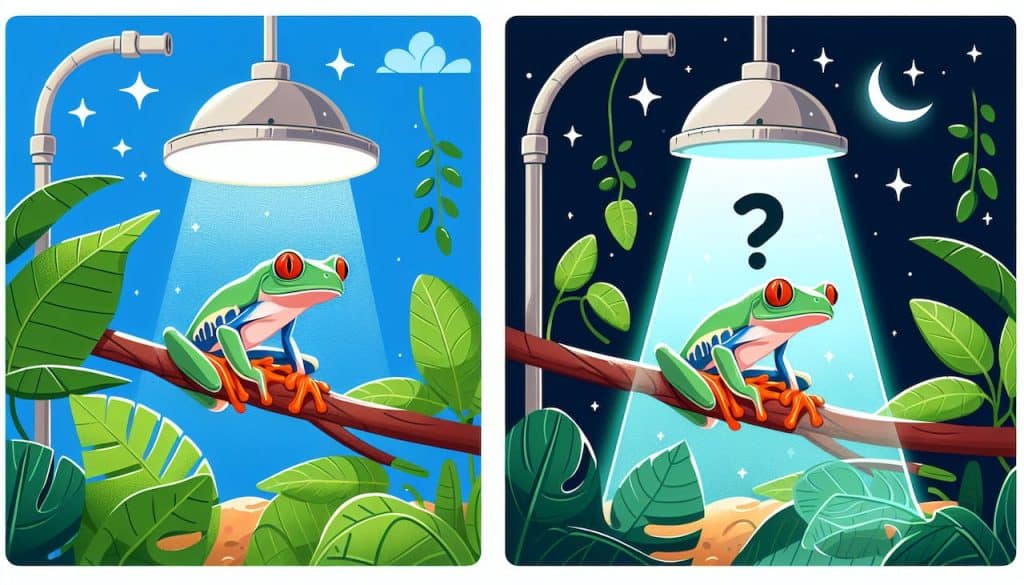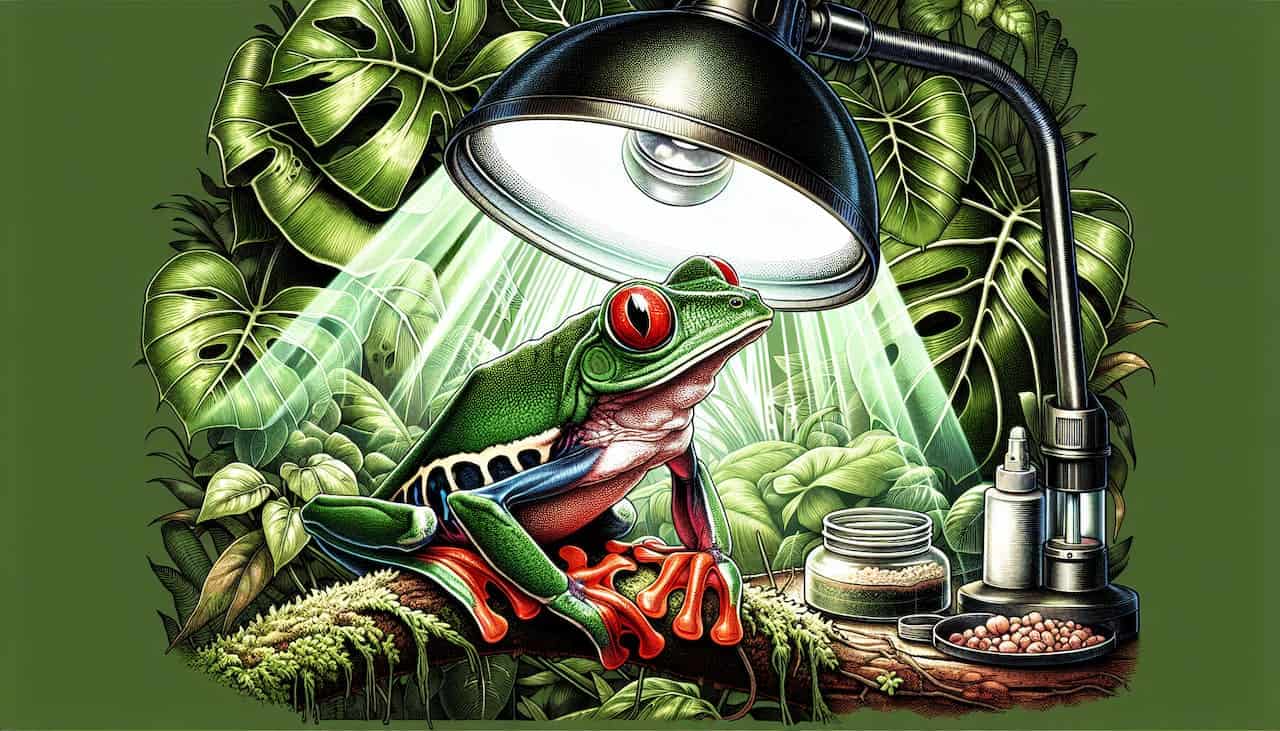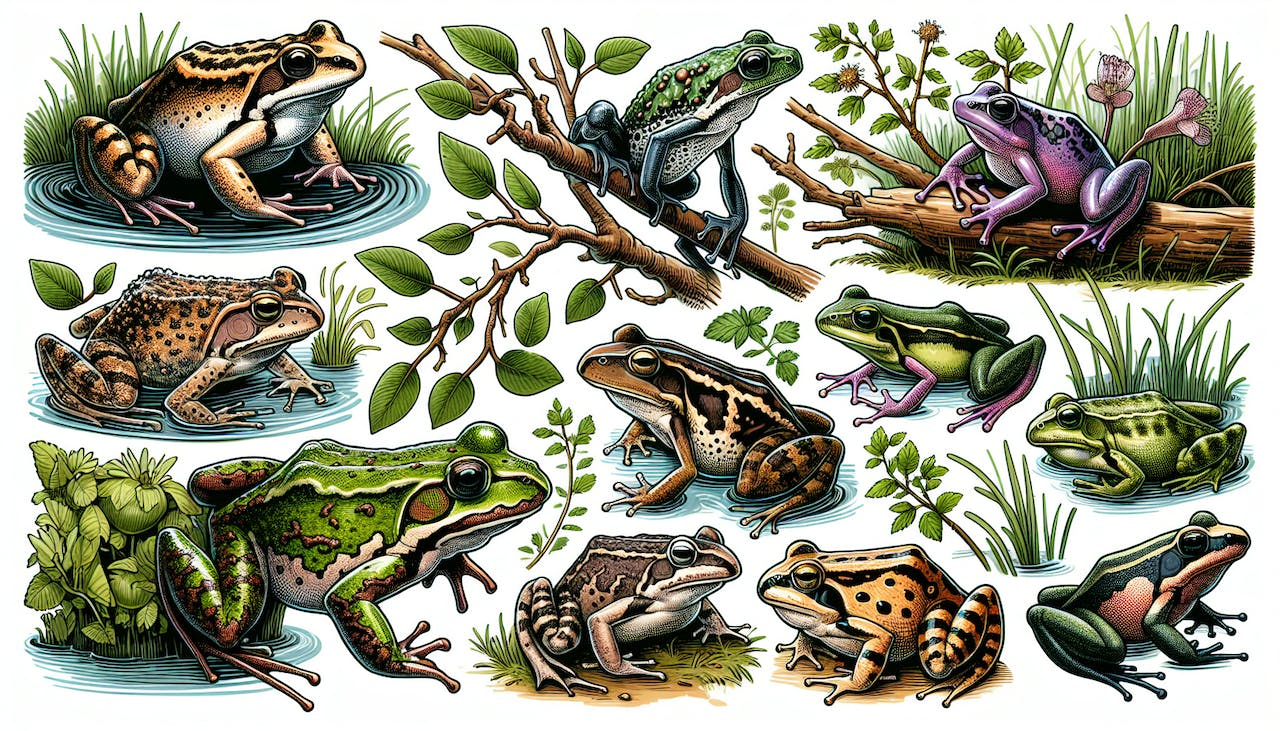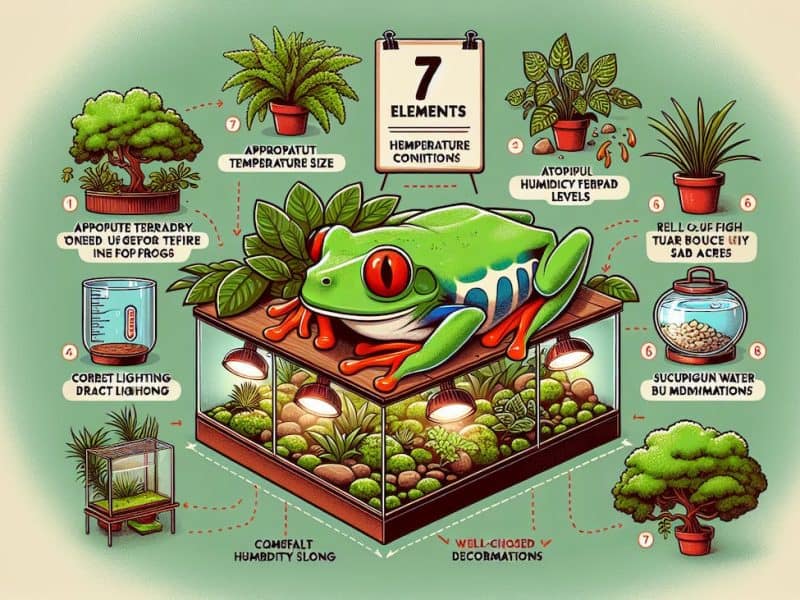Providing appropriate lighting is an important consideration when setting up an enclosure for pet red-eyed tree frogs. UVB lighting in particular has benefits for their health and wellbeing, although it is not an absolute necessity. This article will examine the effects of UVB lighting on red-eyed tree frogs and help you determine if it should be part of their habitat.

Why UVB Lighting Matters
Ultraviolet B (UVB) rays are an invisible part of natural sunlight that have positive effects on many reptiles and amphibians. UVB enables their bodies to produce vitamin D3, which aids in the absorption of calcium and phosphorus. This helps prevent metabolic bone disease, which causes deformities, fragility and other issues. Additionally, studies show that appropriate UVB exposure provides other health benefits like stimulating appetite and activity levels and strengthening the immune system. This is why many frog owners choose to provide UVB lighting for optimal wellness.
Do Red-Eyed Tree Frogs Need UVB?
Red-eyed tree frogs are quite hardy and can survive without UVB lighting, although most experts recommend providing low level UVB exposure. As arboreal frogs that live in tropical forest canopies, they would have access to filtered sunlight and occasional direct rays in their natural environment. Recreating small amounts of UVB allows them to thrive even better in captivity. According to reptile lighting companies like ZooMed and Arcadia, the best UVB bulbs for a red-eyed tree frog terrarium are low-output linear fluorescent options like:
- Zoo Med Reptisun 5.0 T8
- Arcadia ShadeDweller
These bulbs should be placed over a mesh top, 6-12 inches above where the frog will climb and rest. The light should shine over one half to one whole side of the tank to create a UVB gradient – this allows the frog to self-regulate exposure by moving closer or further from the light source as needed.
Providing Proper UVB Lighting
There are a few key factors to keep in mind when setting up UVB lighting for pet red-eyed tree frogs: Use a reflective fixture – this maximizes UVB output directed into the terrarium. Change bulbs every 6-12 months – UVB output decays over time. Replace bulbs annually for best results. Supplement with calcium + D3 – lighting alone may not provide complete vitamin D3 needs, so nutritional supplementation is still essential. Avoid overexposure – make sure frogs have shaded areas to retreat from UVB when desired. With attention to these details, a low level UVB bulb can greatly benefit red-eyed tree frogs living in a vivarium habitat.
Enclosure Considerations With UVB
Here are some other things to keep in mind if providing your red-eyed tree frog with UVB lighting:
- No glass or plastic barriers – UVB can’t penetrate these materials, so the light must shine directly into the tank.
- Live plants – UVB supports live vivarium plants as well. Choose species that thrive in high humidity.
- Day/night cycle – make sure to turn UVB off at night since red-eyed tree frogs are nocturnal.
- Heat + humidity – maintain proper temperature gradients and moisture levels for these tropical frogs.

The Consensus? Beneficial But Not Essential
While red-eyed tree frogs can technically survive and breed without access to UVB lighting, providing low level exposure is still recommended by most frog-keeping experts. UVB allows them to properly synthesize vitamin D3 naturally and supports other physiological processes as well. It is relatively easy to supply in a naturalistic vivarium and offers health benefits with minimal risk when set up properly. Ultimately UVB can be considered beneficial but not 100% necessary for these hardy, adaptable tree frog pets.
Key Takeaways: UVB for Red-Eyed Tree Frogs
- Low UVB exposure provides health benefits but is not required
- Best practice is to offer access with shade areas for self-regulation
- Use low output linear fluorescents like Reptisun 5.0 or ShadeDweller
- Replace bulbs every 6-12 months when output decays
- Still supplement feeder insects with calcium + D3
- Ensure proper heat, humidity, plants and hides too
Providing some UVB for optimal wellness is easy with the right lighting and enclosure considerations. Be sure to thoroughly research the needs of any exotic pet to give them the best care possible.



